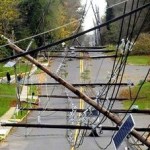
Washington – The U.S. Environmental Protection Agency announced plans on May 4 to regulate coal ash dumps across the country. The announcement comes after months of delay and misleading statements by the power and coal industries and nearly 17 months after one billion gallons of toxic coal ash burst through a dam near a Tennessee Valley Authority (TVA) power plant in Kingston, Tenn.
EPA proposed two options to regulate coal ash: a plan to classify coal ash as hazardous waste, and another to regulate it as non-hazardous. The difference between the two is stark, and environmental groups are hopeful that the agency will make the right decision and finalize strong, federally enforceable coal ash safeguards that use the strongest limits of the law to protect the communities living near coal ash sites.
Polluters will claim EPA’s plan to designate coal ash as hazardous waste will come with a cost to industry as they conveniently ignore the costs to public health of dumping unregulated coal ash into ponds and landfills. Coal ash is filled with arsenic, lead, cadmium, mercury, selenium, and many other dangerous pollutants that can cause cancer and damage the nervous system and other organs, especially in children.
For years, power and coal companies have been dumping poisonous coal ash into unlined landfills and unsafe ponds. Last August, EPA rated 49 coal ash sites across the country as ‘high hazard’ sites, meaning a failure will probably cause loss of human life. The problems surrounding coal ash ponds and landfills are staggering and continue to compound as the agency begins to scrutinize many of these forgotten sites. In February, environmental groups identified 31 additional coal ash contamination sites in 14 states.
“This is certainly a win of sorts, in that the EPA is finally making strides to regulate coal ash as hazardous waste,” said Trip Van Noppen, Executive Director for Earthjustice. “Their inclusion of an option to regulate coal ash as hazardous waste is an important first step. The next important step will be to maintain this position in the face of inevitably misguided claims by polluters that the sky will fall under this new regulatory environment. The science is clear that coal ash is hazardous waste, and we are confident this administration will stand by its commitment to follow the science in its policy decisions.”
“The unregulated dumping of coal ash has already contaminated groundwater, creeks and wetlands at more than 100 sites across the U.S. with arsenic and other heavy metals,” said Eric Schaeffer, Executive Director for Environmental Integrity Project. “These pollutants are dangerous to human health, toxic to fish and other aquatic life, and notoriously difficult to clean up. EPA’s proposal finally acknowledges these risks, and we look forward to a final rule with federally enforceable standards to protect the public from the hazards of coal ash.”
“The catastrophic failure of the dam in Kingston, Tennessee, finally got the nation’s attention to regulate toxic coal ash,” said Scott Slesinger, Legislative Director for the Natural Resources Defense Council. “We learned in Kingston, as we recently learned in the Gulf, that catastrophic failures associated with dirty carbon happen with tragic results. We are disappointed that the rule brings forward two dramatically different regulatory options. One option, which we believe is critical to protect public health and the environment, has federally enforceable standards for hazardous waste like those the rest of American industry follows in disposing of its hazardous waste. The other option treats this hazardous waste as if it were not loaded with high levels of arsenic and other toxic metals. We expect EPA to choose the option that adequately protects the public, particularly our precious groundwater, and treats this hazardous waste as a hazardous waste.”
“As the Tennessee Kingston coal ash spill made abundantly clear, the current handling of toxic coal ash is unsafe and unacceptable,” said Sierra Club Executive Director Michael Brune. “We applaud EPA for acting on this problem and strongly urge them to adopt federally enforceable safeguards, not continue with the failed patchwork of state regulations.”
“Lack of regulation in the Southeast has already caused known harm. From the enormous spill in Tennessee to contamination from coal waste ponds in North Carolina, the need for more comprehensive regulation is clear,” said Jeff Gleason, Deputy Director of Southern Environmental Law Center. “EPA’s Subtitle C proposal is an important step toward rectifying past harm and preventing future disaster.”
The TVA Kingston Coal Ash Disaster raised awareness of the dangers of toxic ash. But there are many other communities at risk. Check how communities are being affected by fugitive dust, contaminated water and massive mountains of coal ash and why federal regulations are needed to protect them: Surrounded by Coal Ash – Communities at Risk (http://www.youtube.com/watch?v=2m_S2NXrLcU)
The Natural Resources Defense Council is a national, nonprofit organization of scientists, lawyers and environmental specialists dedicated to protecting public health and the environment. Founded in 1970, NRDC has 1.3 million members and online activists, served from offices in New York, Washington, Chicago, Los Angeles, San Francisco and Beijing.
Press Release dated May 4, 2010













